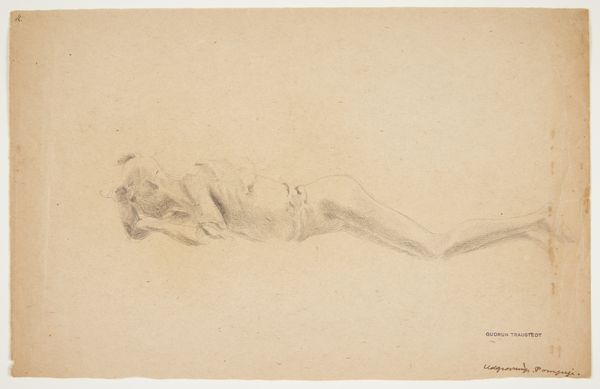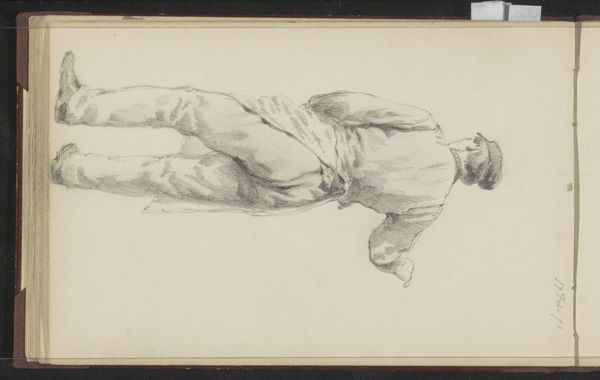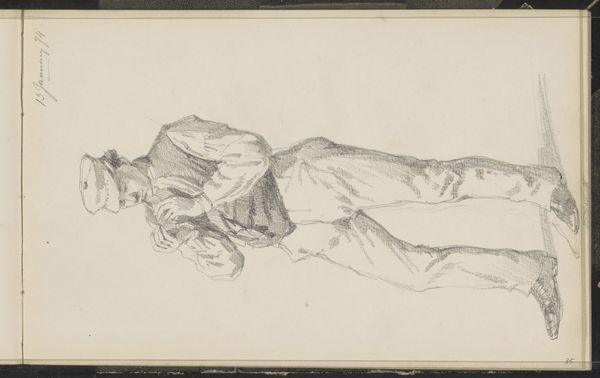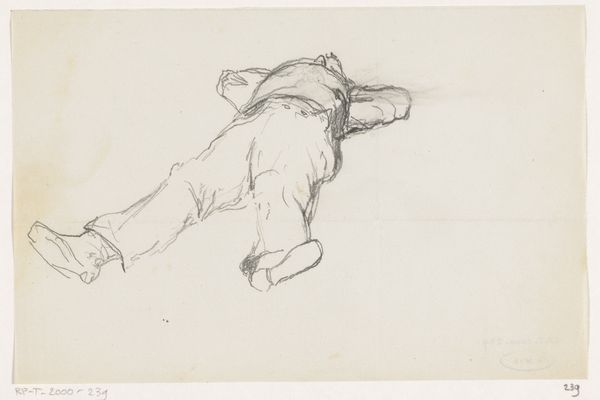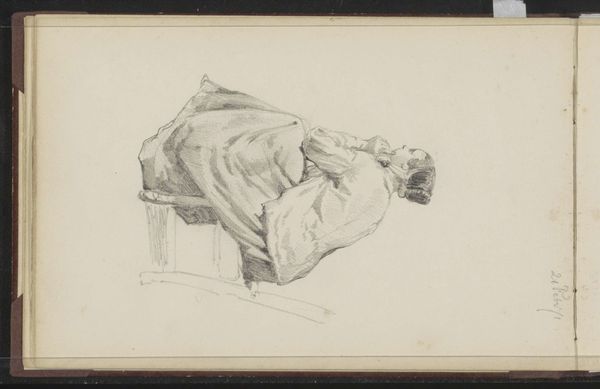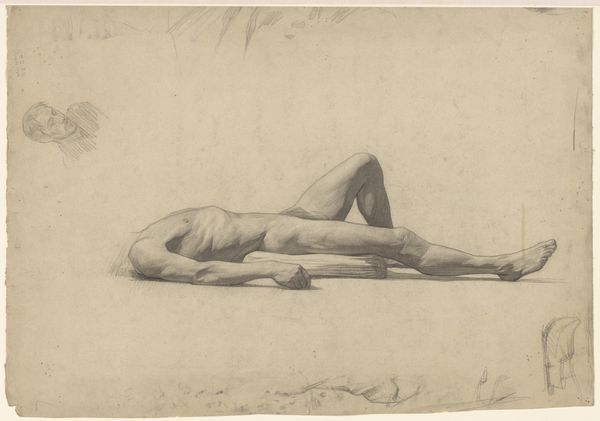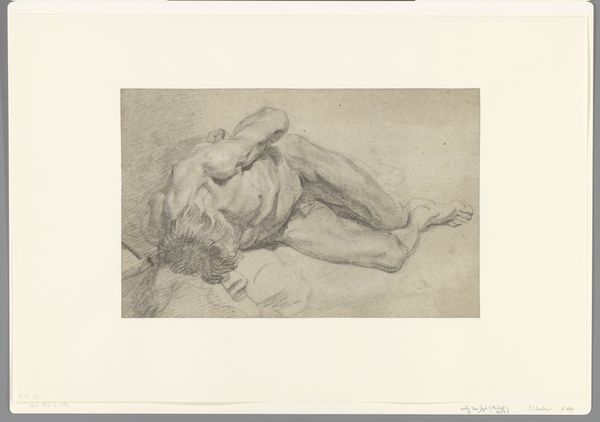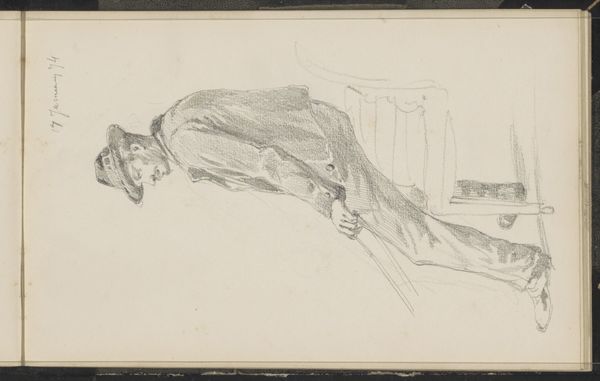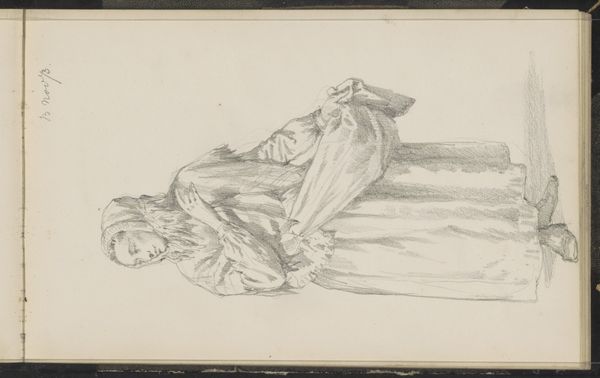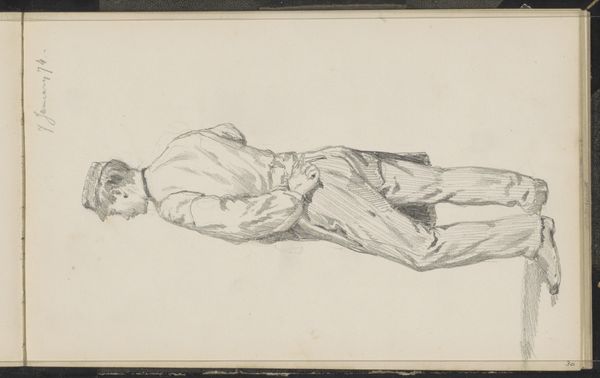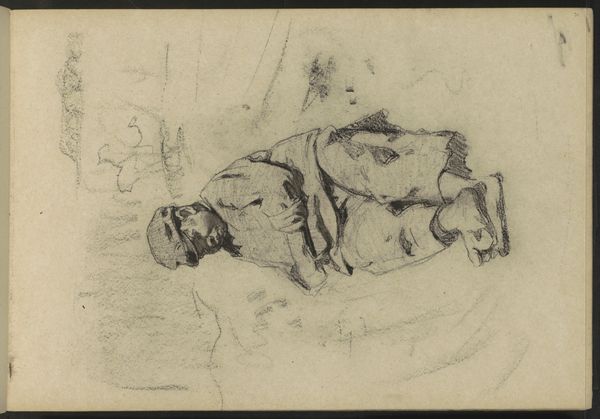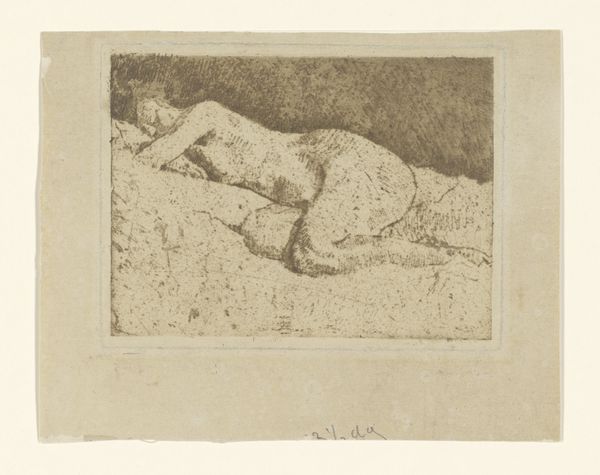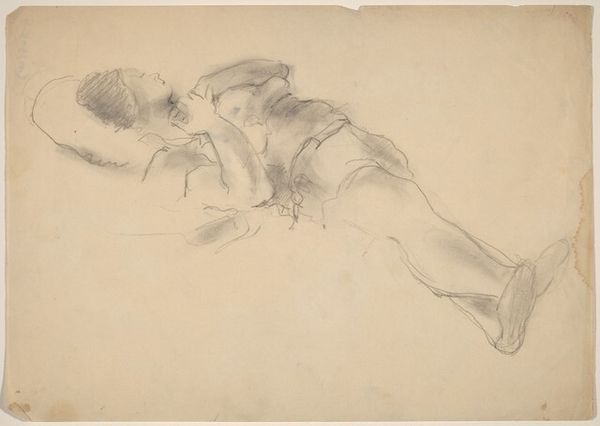
drawing, pencil
#
portrait
#
pencil drawn
#
drawing
#
pencil sketch
#
landscape
#
pencil drawing
#
pencil
#
pencil work
#
genre-painting
#
realism
Dimensions: height 176 mm, width 236 mm
Copyright: Rijks Museum: Open Domain
Editor: This is a pencil drawing entitled "Liggende man steunend op zijn ellebogen," or "Man Lying Leaning on His Elbows" by G. Visser, made sometime between 1800 and 1900. The thing that strikes me is how ordinary he looks, almost anonymous. What’s your take on this? Curator: I see a fascinating example of the artist engaging with the daily labor of ordinary people. The medium – pencil – itself is significant, as it’s a readily available and affordable material, linking art making to broader accessibility and potential mass production through reproduction techniques like prints. Note the clothing: how does the portrayal of such functional attire ground the figure in a specific socio-economic reality? Editor: It seems to present labor in a casual and maybe even glorified manner. Is that your impression, too? Curator: Perhaps. I'm more intrigued by the context of its creation. What type of paper was employed, where was it produced, and who might have had access to such material? Was it for preparatory studies? Or was it an attempt to ennoble labor in some manner? This all helps us question its place within art and broader production during that time period. Does the paper look machine made or handmade? Editor: That’s an interesting point. I hadn’t thought about the materials themselves speaking to class or accessibility. I'll definitely keep an eye out for these details moving forward! Curator: Excellent. By considering art this way, we appreciate a far more detailed view of not only the figure, but the economy that brought forth his representation through material means.
Comments
No comments
Be the first to comment and join the conversation on the ultimate creative platform.
